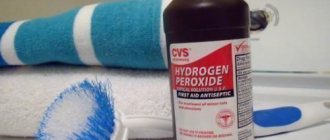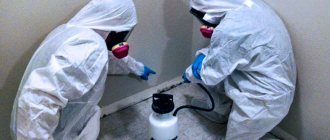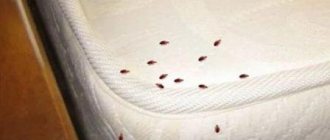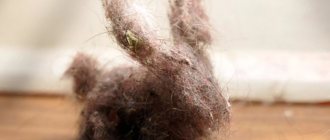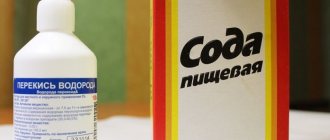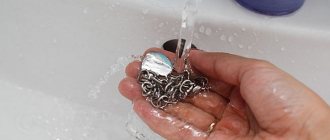How does hydrogen peroxide work on the skin?
Lightening dark spots on the skin with hydrogen peroxide often leaves behind unpleasant consequences in the form of white areas of hypopigmentation. To find out why this happens and what to do about it, you need to familiarize yourself with the composition of this product and its effect on the human body.
Using peroxide you can get the following effect:
- whiten dark spots;
- dry the skin;
- cleanse the skin of bacteria;
- disinfect the skin;
- remove acne.
Peroxide helps make facial skin smoother and brighter, and also reduces acne marks. With its regular use, even old areas of pigmentation and scars disappear.
In cosmetology, a product such as hydrogen peroxide is often used due to the chemical reactions that occur upon contact with the skin: this substance consists of a mixture of oxygen and water, and as a result of its contact with tissue, the oxidation process is started. Once released, oxygen actively combines with dirt, toxins and sebaceous secretions. This leads to the formation of bubbles that push harmful substances and the contents of pustules onto the surface of the dermis. During the breakdown of the medicinal substance, water removes all toxins and elements that are on the skin.
Chemical burns or white spots may appear against the background of cell oxidation. This damage to the skin structure can cause a serious dermatological problem, so use peroxide with caution.
Methods of treating the disease of the chosen ones
Is there a method today that guarantees a 100% recovery? We asked Tatyana Sukhova, a dermatologist of the highest category at a Moscow clinic, to answer this question.
— Cuban doctors have achieved the best results in treating the disease. The method involves administering intramuscular injections of vitamins into depigmented areas. But even he cannot cope with the disease completely. Vitiligo treatment at the Dead Sea is now being actively advertised. Israeli doctors were able to obtain pigment on a white spot, but this, alas, does not always look beautiful and, again, does not guarantee complete healing. In our country, the most effective method in the treatment of vitiligo is considered to be a combination of UV and PUVA therapy with the use of photosensitizing drugs. As a result, it is possible to “revive” the white spots, but, unfortunately, it will not be possible to get rid of them completely.
Yulia LAVRINENKO
People's help
Among practicing doctors there is also the following opinion: vitiligo is not a disease, but only a cosmetic skin defect. This means that you need to treat it as normal pigmentation, using herbal medicine, as well as masking the spots with regular foundation. If you choose a shade similar in color to a healthy area of skin, then no one will notice vitiligo. Only on condition that this product is approved by a doctor, since many foundations contain microsubstances that affect pigmentation and can enhance the development of the disease.
Features of the use of the substance
A standard pharmacy solution of hydrogen peroxide usually contains from 3 to 3.5% and is considered relatively safe for the skin. Therefore, the low concentration of the substance allows this product to be used by people with different skin types.
Particularly dangerous is peroxide 3.5%, which, if it comes into contact with the skin in undiluted form, can cause serious tissue damage. When diluting this substance, you must follow all safety precautions and protect exposed areas of the body and eyes from possible contact with the solution.
Precautionary measures:
- Before using peroxide, it is recommended to conduct a skin test and apply a small amount of the product to the inner crease of the elbow or the back of the hands. If your skin is too sensitive, an allergic reaction or irritation may occur. In this case, using the product is not recommended.
- In its pure form, hydrogen peroxide can be applied directly to spots, pimples or acne marks, while avoiding direct contact with surrounding tissues, especially mucous membranes and eyes.
- When using peroxide in masks, strong emollient products should be used as additional components: honey, egg yolk, olive oil, etc.
- You can increase the therapeutic effect if you first cleanse your face of cosmetics and dirt and only then use a chemical solution.
- It is allowed to use the pharmaceutical product no more than twice a week and keep it for no more than 15 minutes so as not to cause a burn.
- After rinsing, be sure to apply a moisturizing or nourishing cream to the skin.
- The treatment course for pigmentation with peroxide lasts about one month, then you need to take a mandatory break for two weeks. At this time, masks with natural ingredients will help restore the microscopic damage to the skin that has occurred.
Compliance with all recommendations and rules for using the chemical will help avoid injury to skin structures and safely get rid of cosmetic problems.
WHITE SPOT DISEASE
This is due to the fact that in limited areas of the skin the production of melanin, the pigment responsible for the color of skin and hair, stops. Patients do not experience pain, itching or other unpleasant sensations. The relevance of the problem of this disease is associated with a pronounced negative impact on the socio-psychological state of such patients.
In the system of dermatological diseases, vitiligo belongs to the group of skin dyschromia, or more precisely, to hypomelanosis. This pathology is common among 0.5% of the world's population.
In most cases, the development of the disease occurs unnoticed. Sometimes the first symptoms of vitiligo are minor skin itching, tingling, and the appearance of whitish or pinkish spots. Subsequently, these spots increase in size, take on different shapes and sizes, and can be surrounded by skin of normal color or with excess pigmentation. Pigment loss can occur quickly, over a few hours, or slowly, over several months.
Such foci can be separate, multiple, single, or merge with each other. Depigmented spots can be located on any part of the body, but most often on open ones: on the neck, in the mouth or around the eyes, in the area of the limbs.
Correct treatment consists of a thorough examination and individual selection of complex therapy, taking into account the possible causes and mechanisms of development of vitiligo, as well as the presence of concomitant diseases. Unfortunately, modern medicine has not established the exact cause of the appearance of white spots on the skin. But the most substantiated theories of the occurrence and development of vitiligo are genetic, biochemical and autoimmune.
In approximately 15–30% of cases, the disease is hereditary . At the same time, vitiligo is often combined with all kinds of autoimmune diseases: rheumatoid arthritis, psoriasis, thyroid diseases, autoimmune diabetes mellitus, pernicious anemia, systemic lupus erythematosus, Addison's disease.
The biochemical theory is that in the skin of patients with vitiligo, an excess amount of free radicals (epidermal hydrogen peroxide) accumulates against the background of a decrease in the content and activity of the antioxidant enzyme catalase. These processes lead to damage to melanocytes and depigmentation of the skin.
The autoimmune theory suggests two possible options for the development of the disease. The first is the presence of a primary disorder in the immune system, leading to its errors and the body’s production of antibodies to melanin, melanocytes and tyrosinase (an enzyme that catalyzes the reaction of converting tyrosine into melanin). The second option is damage to melanocytes or their degeneration under the influence of unfavorable factors, which causes the formation of pathological elements to which antibodies are produced. This theory contains many contradictions. But the positive effect of using drugs that suppress immune reactions indicates the participation of the immune system in the mechanisms of the disease.
The diagnosis of vitiligo is made based on the clinical picture and in most cases does not cause difficulties. This is due to the characteristic clinical manifestations of the disease.
If necessary, examination for vitiligo may include consultation with an endocrinologist, testing for antibodies to thyroglobulin; TSH and other studies, if necessary to assess thyroid function or conduct a differentiated diagnosis; additional immunological examination if there is a high risk of other autoimmune diseases. Skin biopsy is rarely performed. Microscopy of a sample from patients with vitiligo reveals a complete or partial absence of melanocytes, altered collagen fibers, and a large number of melanosomes in the rim surrounding the lesion.
Treatment of vitiligo is aimed at curbing the progression of the disease, reducing its cosmetic manifestations and restoring melanin production. Today, vitiligo is increasingly spoken of as a multifactorial disease, which necessitates an integrated approach to its treatment.
Treatment must begin with a series of therapeutic measures. This is, first of all, consultation with a dermatologist. It is also advisable to consult a psychologist, since the patient essentially needs to learn to live with this disease.
The psychosomatic status of the patient and concomitant autoimmune diseases are determined. The prognostic criteria for the effectiveness of therapy are assessed: the duration of the disease, its clinical form, stability over the last 6 months, and the effectiveness of previous treatment.
Vitiligo is a difficult problem for dermatologists due to the lack of a clear treatment plan. A peculiarity of patient treatment is that many methods have off-label status[1]. Therefore, it is important to explain to patients all existing treatment methods, cut out unnecessary ones and protect them from unnecessary costs.
There are two fundamentally opposing methods of treating vitiligo, aimed at creating the same type of skin pigmentation. The essence of the first method is to bleach small, normally pigmented areas of skin located against the background of continuous depigmentation. The second method is more common and is aimed at enhancing the formation of pigment or using various cosmetics to mask skin color defects. This treatment method can be carried out either surgically or non-surgically.
Conservative treatment of vitiligo includes several areas. First of all, this is treatment with topical corticosteroids of moderate strength ( mometasone furoate and methylprednisolone aceponate ). They are off-label drugs and are prescribed for an average of 6–8 weeks.
Calcineurin inhibitors (local immunomodulators) also have off-label status and are prescribed for 10–18 weeks. Both topical corticosteroids and calcineurin inhibitors are most effective when combined with phototherapy.
You can also prescribe therapy with calcipotriol (the effectiveness of its use increases in combination with phototherapy and excimer laser), 5-fluorouracil, 10% L-phenylalanine . But these drugs are best used in the preclinical or initial clinical stages, i.e. their effectiveness in the treatment of vitiligo is not very high.
Phototherapy methods for vitiligo are a priority because they are most effective. It is best to use narrowband mid-wave UVB therapy (311 nm), spectrum phototherapy (SPT) and PUVA therapy. Irradiation is carried out using a general (over the whole body) or local method, when the effect is directed to the affected areas. The PUVA therapy method involves taking internally or externally photosensitizing agents that improve the perception of ultraviolet radiation - psoralen, psoberan , etc. After this, after a few hours, local or general UV irradiation is carried out. However, it must be remembered that PUVA therapy carries a fairly high potential risk of developing skin cancer. Therefore, all over the world the qualification for the number of such procedures has been significantly reduced. And PUVA therapy must be prescribed with great caution.
When using an excimer laser, the effectiveness of treatment also increases significantly. Laser therapy improves metabolic processes in the skin and promotes the production of enzymes responsible for the formation of melanin.
Systemic therapy for vitiligo is prescribed when the disease progresses rapidly and local treatment is ineffective for 6 months. It consists of pulse therapy[2] with systemic corticosteroids, for example, dexamethasone (5–7.5–10 mg 2 days a week in a row for 1.5–3 to 6 months). This is a fairly safe regimen that can be used for a long time and is indicated only for the progressive stage of vitiligo, when it is necessary to stop the depigmentation process.
If conservative treatment of vitiligo does not give the desired result, surgical intervention . There are several indications for surgical treatment of vitiligo: if the lesions are located in open areas of the body, are a significant cosmetic defect and violate the psychological status of the patient; for 12 months there is no result from local and systemic therapy; the disease is in remission; for one to two years, new spots do not appear, and existing ones do not grow.
Surgical treatment of vitiligo consists of epidermal transplantation using finely perforated grafts. Also in recent years, with the development of microsurgery, the transfer of pure melanocyte cultures or mixed epidermal cultures to the prepared area has become increasingly used.
Another, fundamentally different, method of treating vitiligo is to whiten normally pigmented skin . It is used when the patient's depigmented lesions occupy large areas of the body and it is not possible to cause their repigmentation. In such cases, to color the patient’s skin in one tone, small areas of normal skin are bleached (depigmented) using 20% hydroquinone ointment .
The main class of drugs for vitiligo are various concealers, dermatocosmetics, and sunscreens. Cosmetics help make the manifestations of the disease less noticeable. Today, dermatocosmetological products have been developed that allow you to even swim and sunbathe without fear.
It is very important to consider the clinical stages of vitiligo when choosing treatment methods. The preclinical stage is characterized by a deficiency of melanocyte growth factor in the system. It is unknown where the next outbreaks will appear. In this case, as the disease progresses, it makes sense to prescribe systemic therapy that can stop the pathological process. At this stage the disease is reversible.
At the initial stage, possibly reversible, there is a decrease in the amount of melanin in melanocytes. Here the success rate of therapeutic interventions is approximately 50%.
At a late stage, which is considered almost irreversible, melanocytes are destroyed. In this case, so-called cellular technologies can help, or, if the process is widespread, it is preferable to get rid of single areas of pigmentation.
Modern drugs and treatment methods make it possible to slow down or stop the developing process to a certain extent. But it is possible to achieve restoration of pigmentation only in some patients and mainly in the early stages of the disease[3]. Currently, the search for effective methods of treating this disease continues.
Almost all experts agree that vitiligo does not affect the general condition of the body in any way and is a concern only for aesthetic reasons. And some doctors are even inclined to believe that vitiligo is not a disease, but a cosmetic defect.
But while vitiligo is not medically dangerous, the appearance of white patches on the skin can have a negative impact on a person's emotional and psychological health and sense of self-worth. That is why the psychological aspect of vitiligo treatment is so important.
White spot disease also affects famous people. And some even manage to turn the disease into a plus.
Michael Jackson has repeatedly stated that his skin became light not because of plastic surgery, but as a result of vitiligo. The King of Pop took the path of bleaching the areas of remaining pigmentation.
Here is another example - Winnie Harlow - the first and so far the only model in the world with vitiligo, winning not only the world catwalk, but also the hearts of millions of fans around the world. She is proud that she managed to overcome two barriers : social and psychological - the one that prevents people who are different from others from expressing themselves and achieving success.
Various treatments can minimize, disguise, or in some cases eliminate white spots on the skin. But a lot also depends on your attitude towards your disease. Sometimes your disadvantages can still be turned into a big and fat plus.
Prepared based on materials from the IX International Forum of Dermatovenereologists and Cosmetologists
————- [1] Off-label (English off-label, from off - outside, label - label, instructions) - the use of medicines for indications not approved by government regulators bodies not mentioned in the instructions for use. [2] Pulse therapy is the intravenous administration of ultra-high doses of glucocorticoids for a short period of time. [3] Proper treatment of vitiligo can slow the progression of the disease and cause the lesions to grow back. However, according to some data, 60% of successfully treated patients relapse after some time (months or years).
Useful recipes with peroxide
- Peroxide should be applied to dry skin using a cotton swab (or cotton swab), which is applied to the problem area. You can remove the product with a damp cloth, and then apply a moisturizer without harmful dyes and additives to the skin. You can repeat this procedure several times a day until the spot on the skin becomes lighter.
- In order to fade freckles or pigment marks on the body, it is recommended to combine peroxide with grapefruit juice in a 1:1 ratio. After this, you need to treat the skin with the prepared solution.
- Peroxide taken in the amount of 2 teaspoons and potato starch 1 tablespoon will help remove freckles. After mixing, the mask should be applied to the face and when it dries, rinse with plain water.
- In addition, you can add hydrogen peroxide to a Vaseline-based cream or ointment. This product should be used immediately after preparation, as it quickly loses its strength.
- You can also rinse your mouth and throat with peroxide by mixing one teaspoon of the solution with one glass of water. This product will have an antibacterial and disinfectant effect.
Traditional medicine offers several safe and effective ways to remove cosmetic defects using peroxide:
- Masks;
- Rubbing;
- Compresses.
Peroxide can be used topically or as a cleansing face mask. It is recommended to clean the skin with peroxide at home in combination with the following ingredients: honey, cottage cheese, aloe, yeast. Homemade masks help whiten pigmentation, normalize the functioning of the sebaceous glands and even out the complexion.
Mask with cottage cheese
In order to make a curd mask with peroxide, you need to take a tablespoon of heavy cream or cottage cheese and add 8 drops of this chemical solution to it. You can also put one egg yolk in the mask. The resulting mixture should be applied to the face in an even layer. Wash off after 15 minutes. The curd product is ideal for dry and sensitive skin.
Mask with honey
A honey mask with peroxide helps to gently cleanse the skin. To prepare the mask, you will need 2 drops of iodine, one tablespoon of honey, one spoon of aloe juice and 2 drops of peroxide. The resulting mixture can be applied only to pigmented areas or to the entire surface of the face. Wash off after 15 minutes.
Yeast mask
To make a yeast mask, you need to take two tablespoons of yeast and dilute it with peroxide until you get a thick consistency. Apply the yeast mask only to blackheads on the face or directly to the area of pigmentation. Yeast helps restore skin cells and eliminate acne.
Badyagi mask
You will need to take 5 g of badyagi and add a couple of drops of peroxide to it, then apply the finished mixture all over your face. You need to wash off the mask after 10 minutes. With the help of this product it is possible to dry out acne and relieve skin inflammation.
